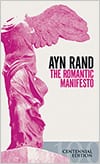Hi, Guest!

There are many special or “cross-filed” chains of abstractions (of interconnected concepts) in man’s mind. Cognitive abstractions are the fundamental chain, on which all the others depend. Such chains are mental integrations, serving a special purpose and formed accordingly by a special criterion
.Cognitive abstractions are formed by the criterion of: what is essential? (epistemologically essential to distinguish one class of existents from all others). Normative abstractions are formed by the criterion of: what is good? Esthetic abstractions are formed by the criterion of: what is important?
An artist does not fake reality — he stylizes it. He selects those aspects of existence which he regards as metaphysically significant — and by isolating and stressing them, by omitting the insignificant and accidental, he presents his view of existence. His concepts are not divorced from the facts of reality — they are concepts which integrate the facts and his metaphysical evaluation of the facts. His selection constitutes his evaluation: everything included in a work of art — from theme to subject to brushstroke or adjective — acquires metaphysical significance by the mere fact of being included, of being important enough to include.
An artist (as, for instance, the sculptors of Ancient Greece) who presents man as a god-like figure is aware of the fact that men may be crippled or diseased or helpless; but he regards these conditions as accidental, as irrelevant to the essential nature of man — and he presents a figure embodying strength, beauty, intelligence, self-confidence, as man’s proper, natural state.
An artist (as, for instance, the sculptors of the Middle Ages) who presents man as a deformed monstrosity is aware of the fact that there are men who are healthy, happy or confident; but he regards these conditions as accidental or illusory, as irrelevant to man’s essential nature — and he presents a tortured figure embodying pain, ugliness, terror, as man’s proper, natural state.